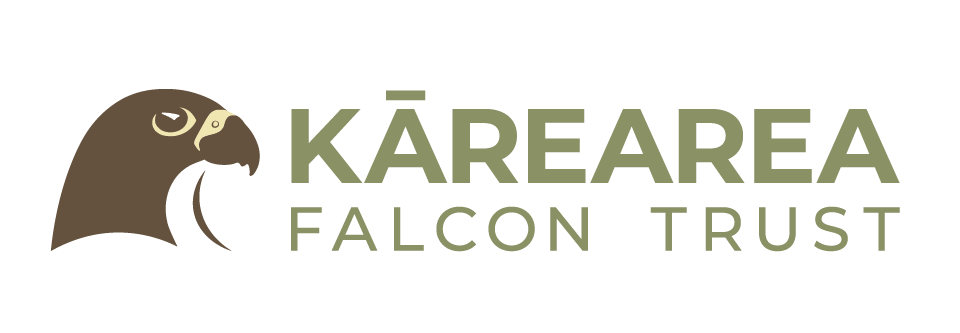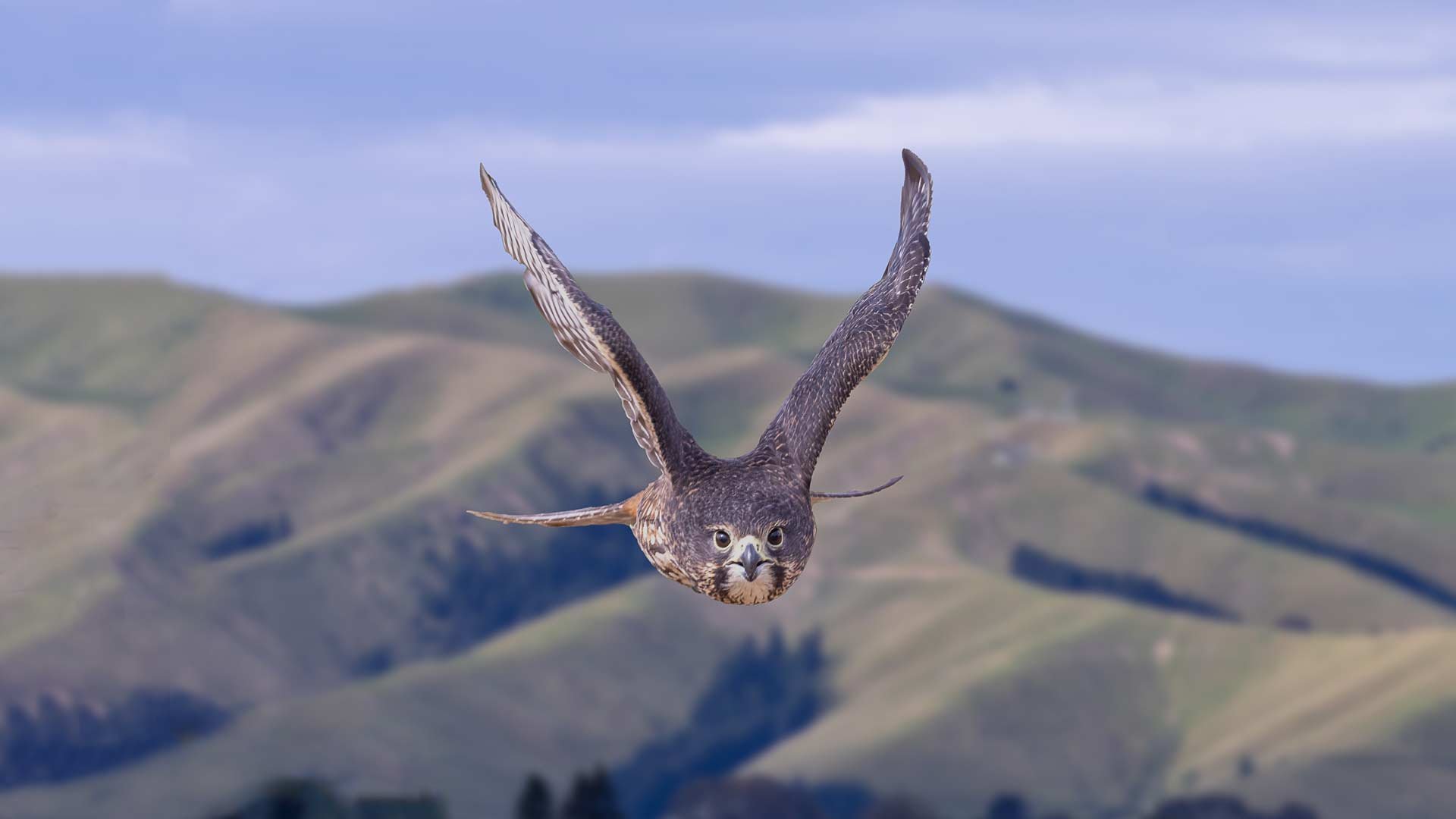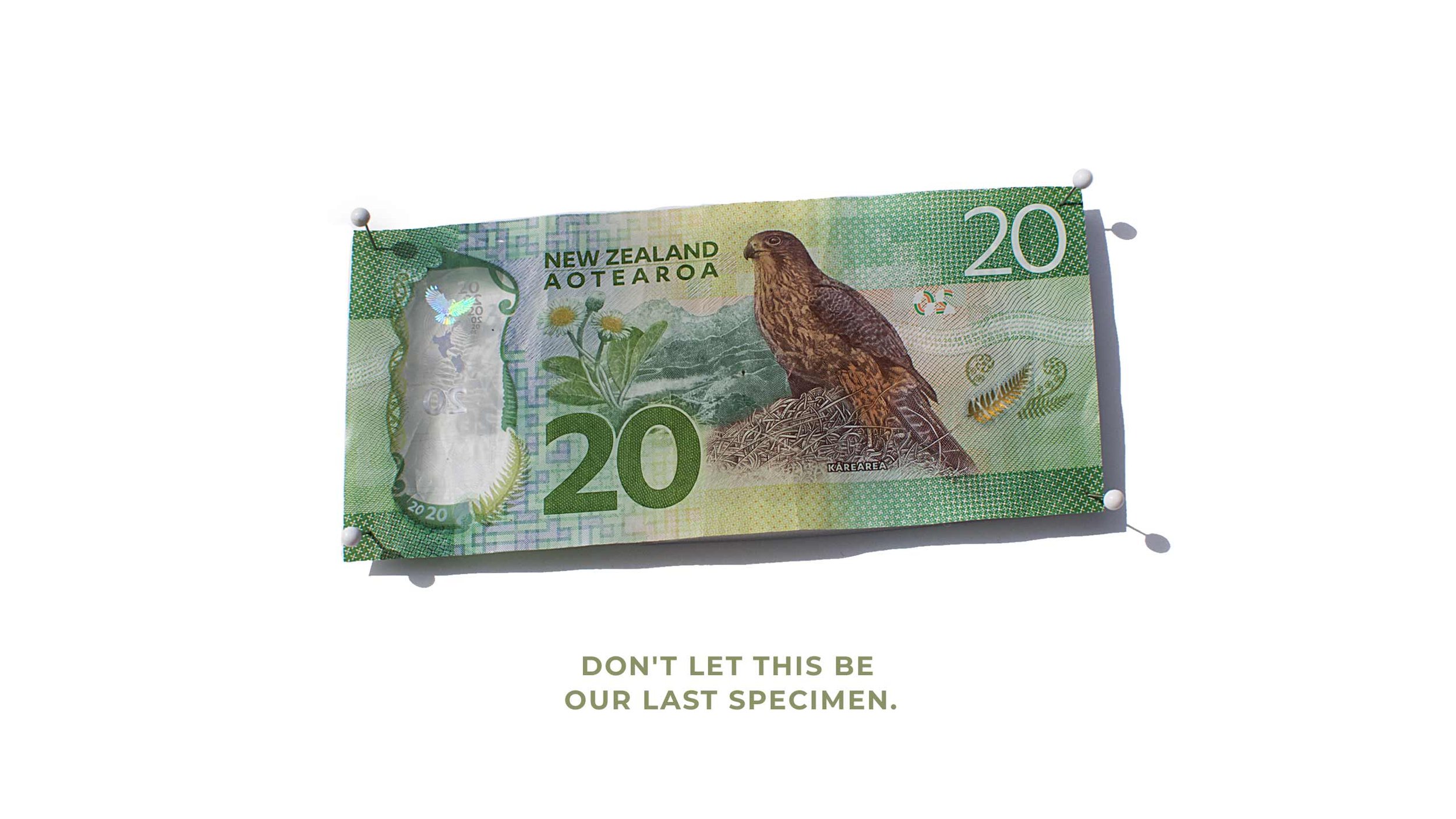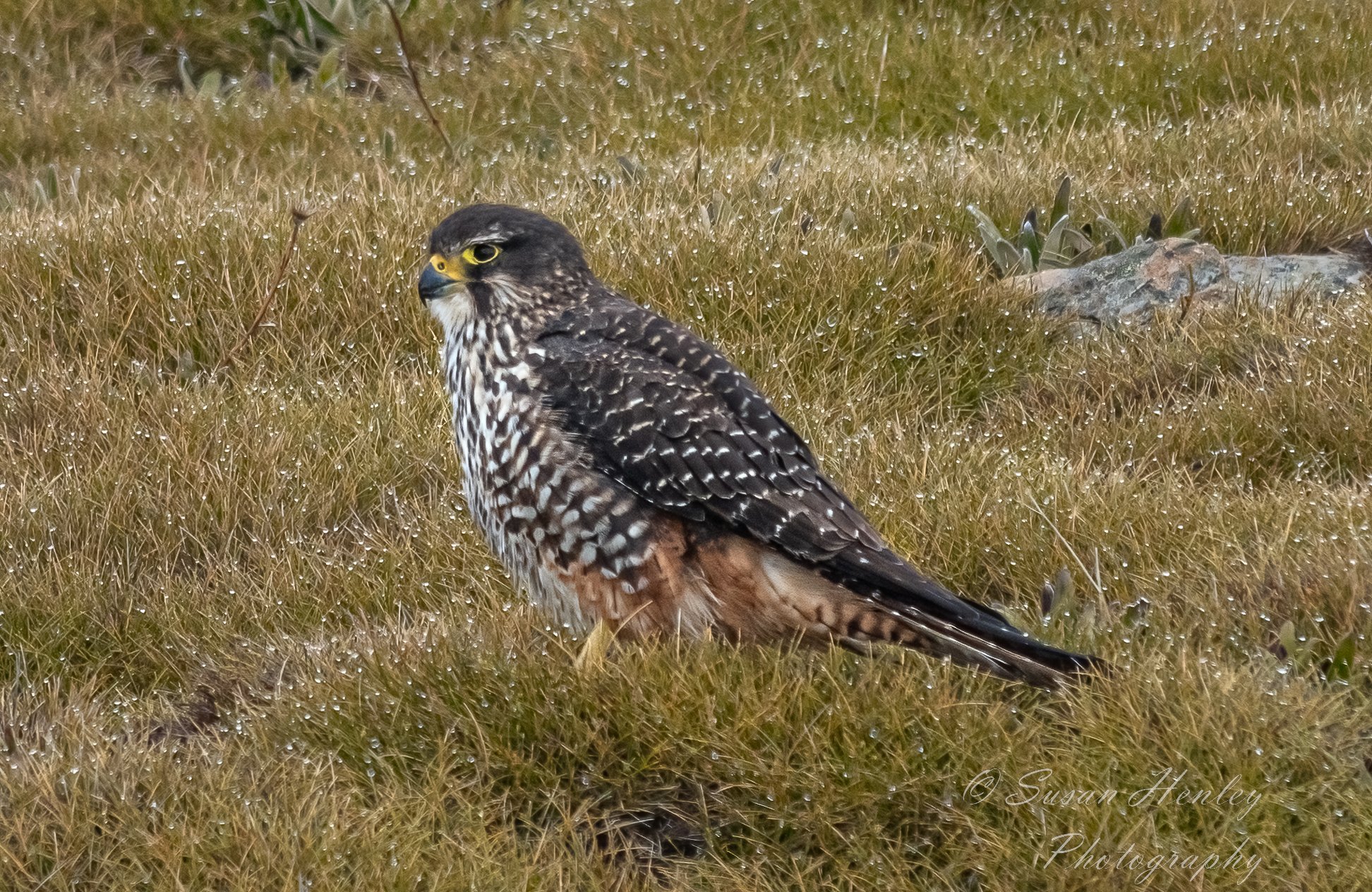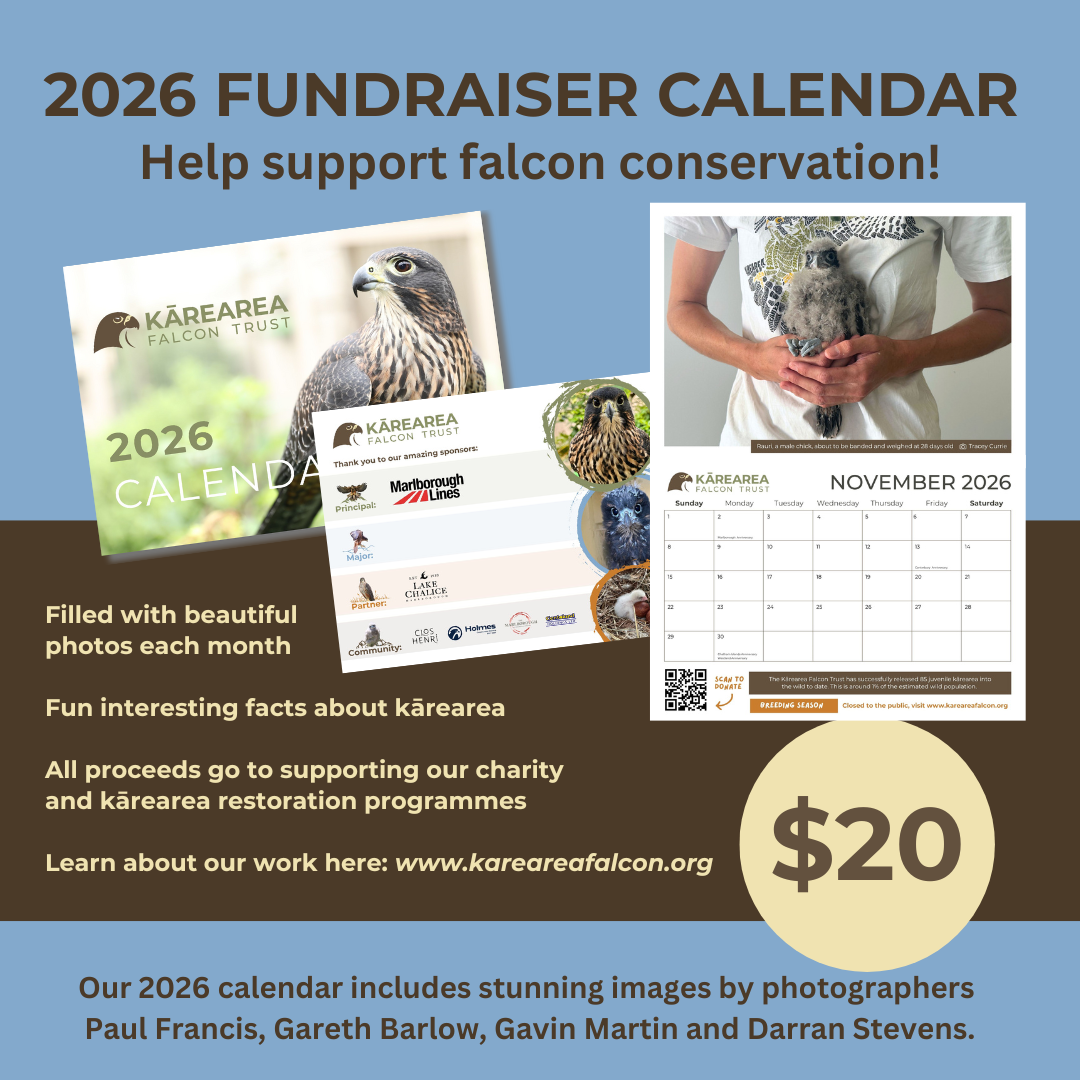Today only 5,000–8,000 kārearea remain!
Our kārearea once enjoyed a thriving and sustainable wild population across New Zealand; sadly, this is not true today. The Department of Conservation lists the New Zealand falcon as 'At Risk'.
The Kārearea Falcon Trust is on a mission to rebuild the kārearea population – but we need your help.
Advocacy - Rehabilitation - Restoration
To ensure the future of the New Zealand Kārearea in Aotearoa, the Kārearea Falcon Trust was established in December 2008.
Today our small but devoted team works tirelessly to see the kārearea thrive again.
We strive to build awareness of kārearea and the threats they face. Creating kārearea advocates through our education program for students, the varied tours of our centre, talks to community groups, and with attendance at events across Wairau, Marlborough.
We rescue wild kārearea from around the motu, to rehabilitate here at our centre, with the hope to release them back to the wild.
Our resident kārearea are those that cannot survive in the wild and rely on us for food, shelter and healthcare. It is through these breeding pairs that we can restore the wild populations, as we release any chicks bred by them
2026 CALENDAR
Our 2026 calendars are hot off the press and ready for sale in our Fundraising Shop page.
Full of colourful images of our resident kārearea and with lots of information, they are a great way to support the mahi we do.
They make a great momento of your visit and are perfect calendar for the home, office or to gift to friends, family or staff members.
Report a kārearea sighting
Do you think you have seen a kārearea?
If you are a Marlborough local then we’d love to hear about it!
Our kārearea (when released) have either a red or yellow band with number identifiers specific to that falcon.
We also love to hear about kārearea in the wild and to learn their stories.
Photos are fantastic resources so please share these with us if you have been able to take any.
Email: office@kareareafalcon.org
We also recommend that you log a sighting with Wingspan.
Wingspan in Rotorua have a fantastic resource for recording sightings which is easy to use. These sightings then become part of the interactive map which you can also view, and contains records of sightings since the year 2000.
This is a great way to contribute to ‘citizen science’ and help shape the known locations and potential population fluctuation of wild kārearea that ultimately helps us manage their recovery as a species.
For those of you who are Ornithologists then we would also recommend ebird.org as it is the world's largest online birding community.
Every sighting matters.
